Your Company’s Missing DEI Strategy: Remote Work


As companies continue to say they will follow through on their diversity, equity and inclusion (DEI) pledges, the evidence suggests that many recent changes to hiring practices and workplace culture are not making much of a difference.
Black women are feeling stressed out in the office at very high levels. Being out at work is a distraction for many LGBTQ employees. And overall, women have reported feeling burned out at a higher rate than men, which shouldn’t be a surprise as female employees shoulder the burden of juggling family and office responsibilities more than their male colleagues.
If companies are truly committed to ensure that all employees are treated equally, there is one simple solution that could make everyone in the office feel valued — before asking employees of color to work for free to buoy your DEI programs or spending a lot of money on DEI consultants.
It’s clear that offering remote work as a benefit, with no strings attached, can help many employees heal and thrive as they feel both valued and productive.
Editor's note: Be sure to subscribe to our Brands Taking Stands newsletter, which comes out every Wednesday.
To start, there’s a racial divide in attitudes toward working remotely: A new study from Future Forum found that Black men and women prefer more flexibility in where they work (38 and 33 percent, respectively), while white men and women responded the same at a rate hovering around 25 percent.
As Leron Barton, an author, speaker and engineer by trade summed it up on Slate last week: “As a Black man, my mental health is a priority. I have to guard and protect myself from experiencing and witnessing racism every day. I am currently working remotely, and I can say for certain my mood and demeanor have improved. Not having to decide if I should address a racist comment or action as much has made my day easier.”
For LGBTQ employees, the office versus remote debate is a mixed bag. A LinkedIn survey from last month found that 40 percent of LGBTQ employees value the networking opportunities available with other LGBTQ professionals when they are in the office. Yet more than a third say that working from home reduces the stress that of feeling they have to constantly come out day after day in the workplace.
Then there’s the ongoing saga endured by Black women, who at a rate as high as 88 percent have indicated they feel burned out at work. Among the reasons: More than half of them told the consultancy Every Level Leadership that they feel as if they are the ones who are made to teach their colleagues about DEI. “Workplace DEI is a company issue, not yours,” Every Level’s CEO, Ericka Hines, said earlier this month on CNBC.
Your Black female employees shouldn’t be working as DEI consultants for free. If anything, they should have the choice to work from home, mind you, with a stipend to cover such costs.
As Eugene S. Robinson, a marketing executive, wrote for the Los Angeles Times: “The [remote work] experience revealed an unexpected and until now unvoiced joy: Working, free from daily office interactions, let the focus stay on work. Absent any other interpersonal weirdness.” In other words, remote work can avoid any awkwardness or hostility that a company’s DEI program has failed to address.
To be clear, the pandemic’s lingering effects continues to have a greater impact on women more than men. Women overall are feeling the stress of managing their families and office responsibilities more than men — nevertheless, one study from McKinsey concluded that companies offer their male employees the opportunity to work remotely at a rate 10 percent higher than their female colleagues. A work culture that sets up different rules for different people is going to end in failure, probably sooner rather than later.
To that end, giving employees the flexibility to decide where they prefer to work is one way in which companies can make all employees feel welcomed, included and treated equally. Is remote work a panacea or cure-all for a company’s DEI challenges? Of course not. Emails can still go unanswered, and snark can be said over Zoom. But given the choice of dealing with microaggressions at the office or over a screen, it’s clear that for many workers’ wellbeing and mental health, one’s space at home is a safe space. Still not convinced? Ask the folks at Meta how its remote work policy panned out for the company.
Image credit: Tima Miroshnichenko via Unsplash
This Supplier Engagement Program Promotes Pollinators and Biodiversity
The urgency of environmental challenges like climate change and biodiversity loss is mounting. Scientists are sounding the alarm of a sixth mass extinction, with 30 to 50 percent of all species on Earth expected to be lost by the middle of this century. And the Intergovernmental Panel on Climate Change (IPCC) has warned the goals of the Paris agreement are on “life support.”
With supply chains that stretch around the world, international companies are positioned to be at the forefront of tackling these challenges within their supply chains. Mondelēz International, which makes some of the most popular snack foods in the world, works to preserve biodiversity and promote climate-friendly practices with supplier farmers in Europe through its Harmony Wheat program — and other companies can learn a lot from its approach.
Mondelēz International’s Harmony Wheat program prioritizes biodiversity and collaboration
The Harmony Wheat program engages farmers to support the adoption of sustainable practices that aim at lowering the environmental impact of growing wheat, including protecting biodiversity and reducing carbon emissions. Mondelēz International developed the program in collaboration with NGOs, agronomists, and environmental specialists and enrolled more than 1,500 wheat farmers across Europe in 2021.
With biodiversity at the heart of the program, partner farmers are required to commit to at least one action from three options designed to strengthen biodiversity, with a specific focus on pollinators: They can plant or extend hedges that provide habitat for insect species; dedicate a minimum 3 percent of their fields to honey fallows made up of local plants rich in nectar and pollen; or plant these nectar-rich species as intercrops on at least 3 percent of their fields after the harvest season.
In 2021, the program has preserved and observed nearly 26 million bees and 32 species of butterflies in Harmony Wheat fields, according to Mondelēz International’s latest ESG report, Snacking Made Right.

Supporting the central stakeholders: Farmers and consumers
The Harmony Wheat program operates closely with its partner farmers, millers and cooperatives with "a very strong, co-creation mindset,” said Marie Ellul, bakery, well-being and sustainability senior manager for Mondelēz International in Europe. The company uses multiple metrics to track progress, share the results with partners, and rework its approach based on lessons learned.
Over the last 10 years the company has intensified its efforts to introduce and implement the program across Europe, Ellul said — and it’s seeing tremendous growth. In 2018, 60 percent of the wheat used across the company’s 30 European biscuits brands was grown by Harmony Wheat participating farmers. That figure rose to 91 percent by 2021, and Hungary became the seventh European country to host the program.
"The aim of the Harmony program is to support the farmers, and the wheat chain in general, in their agro-ecological transition,” Ellul told us. While all countries operate under a common credo for the Harmony program, each country has its own agricultural practices charter personalized on factors such as climate conditions and maturity of agricultural practices. The program pays farmers a premium for implementing their local charter’s guidance on sustainable practices that promote biodiversity and reduce carbon footprint. Mondelēz International’s biscuit production sites also source wheat from the Harmony farmers nearby nearest to them, further reducing climate impact.
For farmers like Emeric Duchesne, the program offers an opportunity to build on the sustainable practices they already use — and be compensated for them. “Being part of the Harmony Wheat sustainability program makes a lot of sense for a farm like ours,” said Duchesne, a French wheat farmer who has worked with the Harmony program since 2014. “Sustainable agricultural practices and environmentally-friendly behaviors have always been our main concerns, and we are proud to continue the ongoing work started by my father and grandfather.”
“Best practices such as planting hedges for biodiversity; reducing the chemicals used thanks to innovative technology, such as the use of GPS; and reducing our impact on the ecosystem we are part of make me proud of my work and more respectful of the wildlife such as bees,” added Duchesne, who coincidentally also keeps bees on his farm.
“It’s also very important for me to be part of the traceability chain provided by the Harmony Program,” he said. "I do produce high-quality wheat, and I want to make sure consumers get access to this high-quality and environmentally-friendly product as well, in the biscuits they eat.”
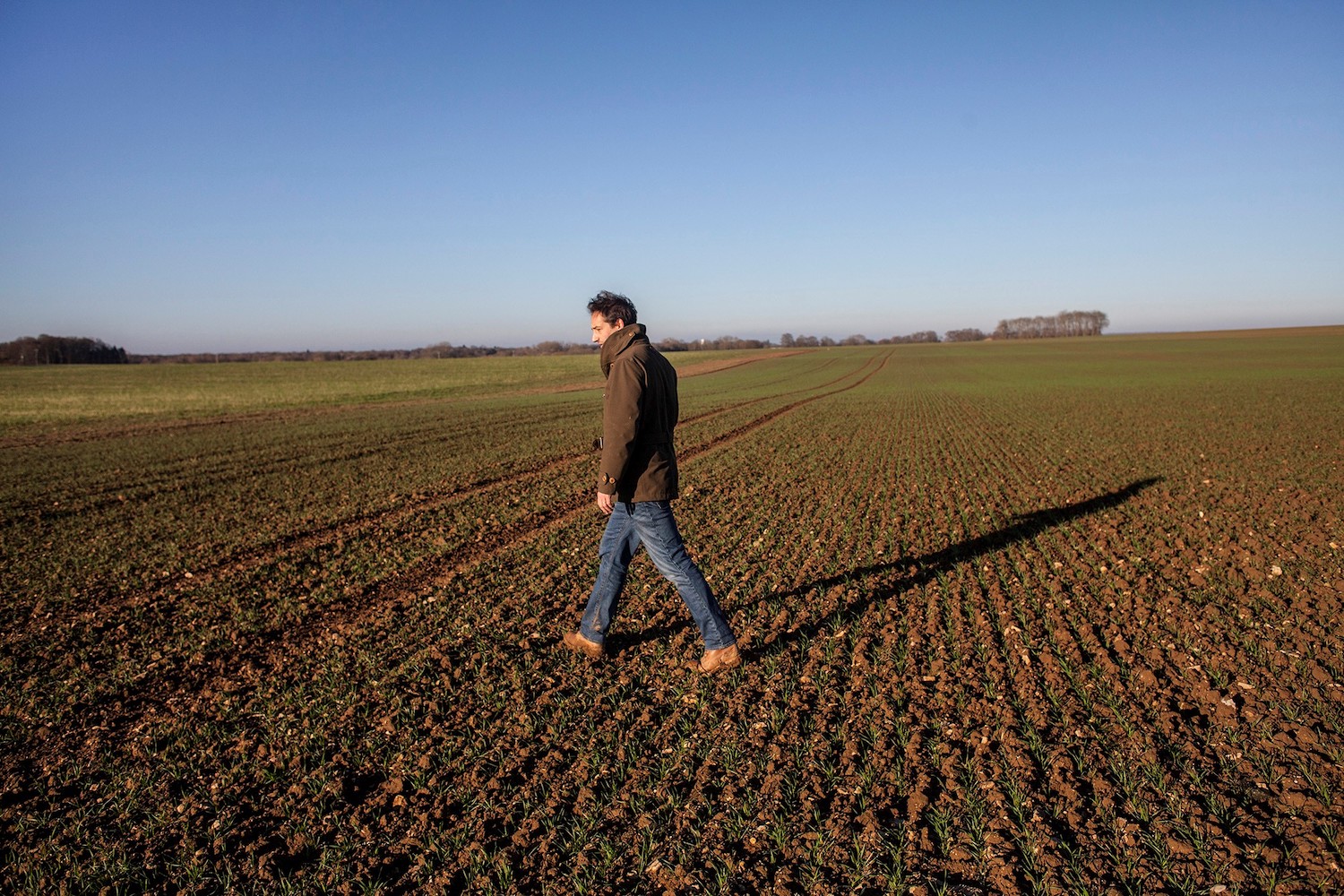
Sustainable sourcing can help companies meet shifting consumer needs
Along with generating more positive impact for both farmers and biodiversity, a sustainable sourcing program like Harmony Wheat can help companies like Mondelēz International connect and build trust with consumers whose preferences are steadily shifting toward more sustainable products. "Consumers are more and more aware of the environmental issues we are facing. They really expect their favorite brands to act more sustainably,” Ellul told us. "Our brands like LU, ORO or Fontaneda are beloved brands in Europe, and they use a large quantity of wheat, so it makes a lot of sense to push that program further for our consumers.”
For other companies looking to bolster their sustainable sourcing in response to consumer preferences, Ellul offers a few pieces of advice: Start small and test locally, co-construct the program with local stakeholders and, when it’s ready, look to integrate the program across your supply chain.
The approach worked well enough for Harmony Wheat, which began as a pilot program with one Mondelēz International brand and 68 farmers in France and steadily expanded based on lessons learned. The company says it is on track to source all of the wheat needed for its European biscuits production from Harmony-affiliated farms by the end of this year. For next steps, it’s focused on contributing to its international commitment to a net zero emissions target by 2050 while continuing its efforts to protect biodiversity in Europe.
This article series is sponsored by Mondelēz International and produced by the TriplePundit editorial team.
Images courtesy of Mondelēz International
Employees Are Ready for Climate Action but Lack Direction
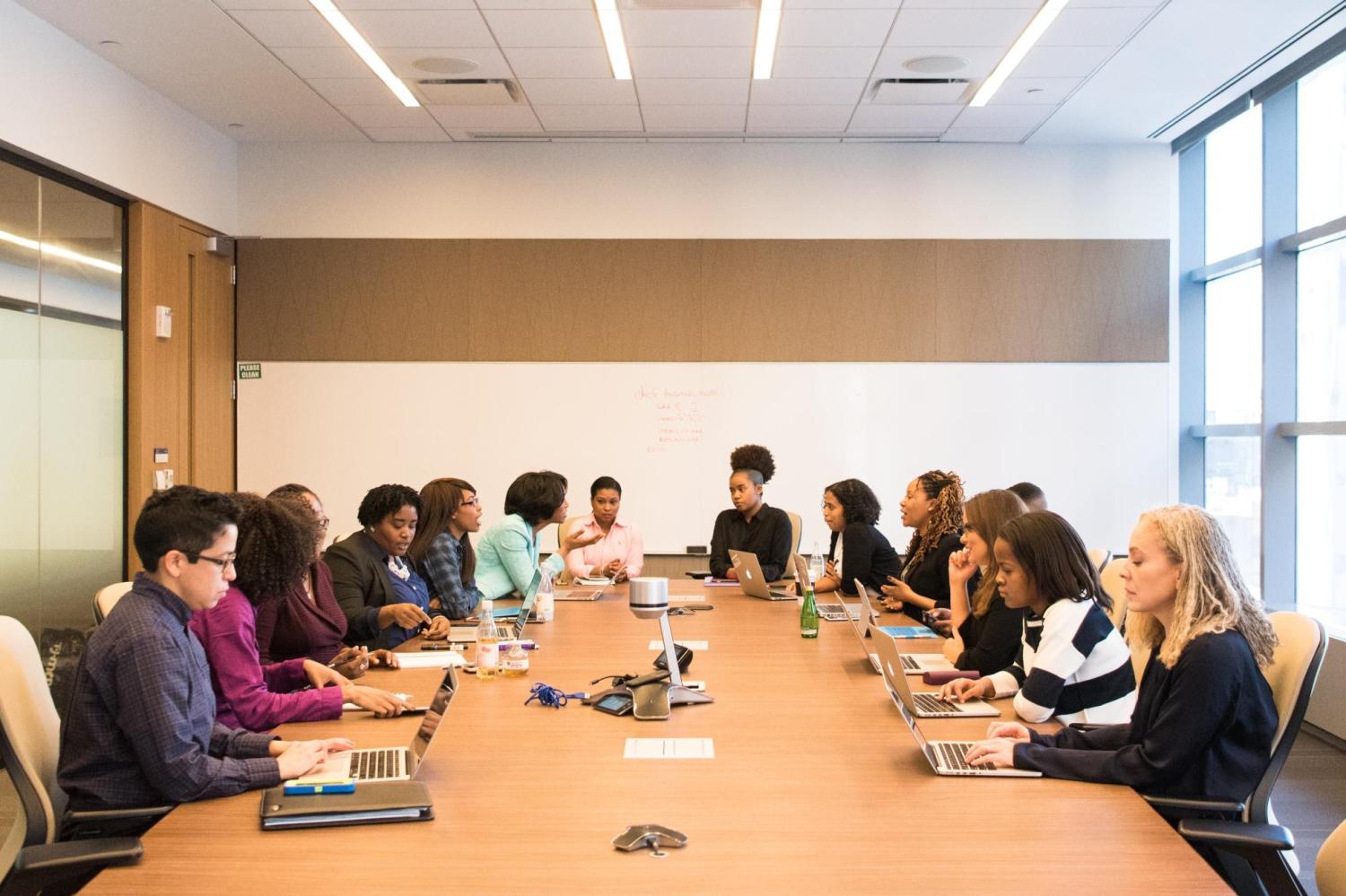

Faced with increasing pressure from stakeholders to act on climate change, corporate America has been briskly setting climate action targets and making pledges accordingly. And a new report published by Kite Insights reveals that U.S. employees are concordant with their employers on climate action. Of the 7,000 employees surveyed across the U.S. in 15 major global industries, 66 percent say they are ready and motivated to tackle climate change at work. In addition, the report reveals that employees believe acting on climate change at work is connected to their motivation and wellbeing.
Though company executives and employees agree that action must be taken on climate change, there is often a disconnect between companies’ climate action plans and employees’ contributions, according to Kite Insights. In an interview with TriplePundit, the founder of Kite Insights, Sophie Lambin, explained that employees are increasingly becoming aware of the risks that climate change poses to them and the world. Further, there is potential here for companies to equip and mobilize their employees to take climate action.
"There is a real opportunity to capitalize on people's willingness to act by equipping them with more knowledge, understanding of the science, what it means to the business [and] to the industry, and then equipping people with the tools and the resources so they can do what they do best in their roles and get things done," Lambin said.
Employees' motivation and wellbeing is linked to acting on climate change at work
According to Kite Insights’ data, 67 percent of employees agree that climate change could have a negative impact on them or their loved ones. It’s clear that climate action resonates with employees' personal beliefs and values, and its upshot — high job satisfaction — is pertinent to retention. Companies can create a more fulfilling work environment for employees by equipping them with the right resources and direction for climate action. And considering the pandemic-induced "Great Resignation," employees are looking for more than just a paycheck.
Company leaders need to take a note of this: The report’s findings reveal that 15 percent of staff surveyed have considered changing jobs so they could work more directly on climate-related issues.
Corporate leadership has climate action plans, but employees can't explain them
A majority of employees are interested in participating in climate action training, according to Kite Insights. However, 63 percent of employees are unable to explain their company’s climate commitments. "There is a strong sense that while employees have some knowledge about what commitments the companies have been making, they have very little ability to translate what these commitments mean to them in the context of their job and their roles," Lambin explained. “There is a real gap between and lack of translation of what those commitments made at the corporate level really means for people's jobs."
To this point, Lambin pointed to a variety of reasons as to why this translation isn't happening. She explained that from Kite Insights’ perspective, leadership hasn't distilled what the translation or transformation of climate action means for the company value chain, and this is why staff across different departments lack a sense of direction or targets. Employees are unsure of how they can contribute toward meeting company climate action targets.
Corporate leaders must actively engage their employees in the course of action, and there are a number of ways they can go about this.
A missed opportunity calls for knowledge mobilization
To seize the missed opportunity of employees’ motivation to act, upscaling is key for companies. The starting point for companies that are looking to mobilize staff to tackle climate change is to recognize their employees' knowledge and understanding of the issues and be cognizant that not all employees begin with the same level of enthusiasm or motivation, Lambin advised. Companies need to meet employees wherever they are: She illustrated this point by explaining that leaders can provide knowledge mobilization opportunities like masterclasses, workshops or volunteering programs to encourage enthusiasm for taking on climate action within the workplace.
To that end, Kite Insights has launched a sustainability education program, which it brands as the “Climate School.” The program focuses on helping organizations prepare for a more sustainable economy by educating employees with the information needed to act. This includes e-learning, workshops, and masterclasses covering areas such as climate science, biodiversity, natural resources and decarbonization.
"Our mission is to equip every employee in every role, to be equipped with the knowledge, the motivation, and the tools to contribute to the climate crisis in their role," Lambin added.
Climate change, employee job satisfaction and business readiness are interrelated. Employees are actively looking to engage in their companies’ climate action plans. And with this, enterprises couldn't be at a more opportune time to achieve their climate goals.
Image credit: Christina Morillo via Pexels
#HotGirlWalk on TikTok Focuses on Achieving Goals, Not Weight Loss, With Millions of Views


During the COVID-19 lockdown, 22-year-old Mia Lind, also known as @exactlyliketheothergirls on TikTok, was looking for a way to get out of the house and focus on her physical and mental health. After documenting her own daily walks on social media, using a #hotgirlwalk hashtag, Lind launched a wellness trend that at last count has generated more than 272 million views on TikTok.
Women with a variety of fitness goals and backgrounds are hitting the sidewalks, streets and trails via #hotgirlwalk to share their journey toward better physical and mental health.
“This challenge isn’t about losing weight but helping you achieve your goals,” shared Lind on TikTok.
A TikTok hashtag becomes a wellness movement
According to Lind, a “hot girl walk” ranges from approximately two to four miles each day. Workouts typically last around 45 to 60 minutes. Participants are urged to walk outdoors whenever possible and take a photo of “something beautiful” they notice during their workout. In addition, Lind encourages walkers to write down three goals before venturing out — one personal, one professional and one social — and to check the status of these goals around every two weeks.
Via TikTok, Lind discussed the origins of hot girl walk, which began during a rough patch in her life. “I’ve always been super extroverted, but COVID plus a hard breakup left me alone with my thoughts for the first time. One of my friends recommended going on walks as a way to get out of the house,” she said.
Participants have shared their own transformations with benefits such as improvements in mental health and fitness, more appreciation for the outdoors and psychological clarity. Some walkers take the extra step of turning off — or at least turning away from — their cell phones for a few moments.
Such benefits can help employees managing home and work life — whether they work onside, a hybrid schedule or remotely from the office. Lind’s relatively simple but bold suggestions could also offer companies inspiration on how to boost their employees' health and wellness programs.
Workouts’ impact on mental and physical health
“Anytime you start working out, it changes the way you feel, both physically and mentally,” said Kari Pearce, creator of PowerAbs and PHIIT. “Exercising, in general, is so good for you mentally and physically. Just the simple act of moving your body, getting your blood pumping and raising your heart rate releases feel-good hormones that can boost your mood.”
Exercising outdoors offers the added advantage of enhancing both the experience and the results.
“When you exercise outside, the physical and mental health benefits are even more prevalent,” Pearce added. “Spending time with nature and the natural light gives you a healthy dose of vitamin D, which may help reduce stress and depression. Also, people who exercise outside tend to work out for longer periods, which means they burn more calories overall.”
Pearce added that the hot girl walk trend is an excellent way to get people interested in walking on a regular basis.
“Because no matter your fitness goals or current fitness level, walking is a great way to take some time for yourself, get your body moving and give your mind a little reset,” she said.
For additional benefits, put away that phone
For hot girl walk participants who choose to ditch their cell phone during their workouts, there can be additional rewards.
“I make a point to leave my phone behind or turn it on silent when I go on my walks or mini runs,” Pearce shared. “I do that because sometimes life gets a little crazy, and I need to take some time for myself.”
The popularity of hot girl walk may be due in part to its focus on simply walking, an inclusive, no-cost activity that is easy to incorporate into daily life. In addition, a hot girl walk can double as a social activity if friends, family or colleagues tag along.
“There are plenty of ways to get active, but walking is one that works and is easy to stick with,” Pearce said. “Not only will you improve your health, but you may just find that you enjoy it — which is a huge bonus. And who knows, maybe you'll even start setting some fitness goals for yourself along the way.”
Since creating #hotgirlwalk, Lind shared on social media, “So many of you have reached out to me telling me how powerful the hot girl walk has been for you.”
Image credit: Ayelt van Veen via Unsplash
Barbie Woos Future Environmentalists with Jane Goodall-Inspired Doll
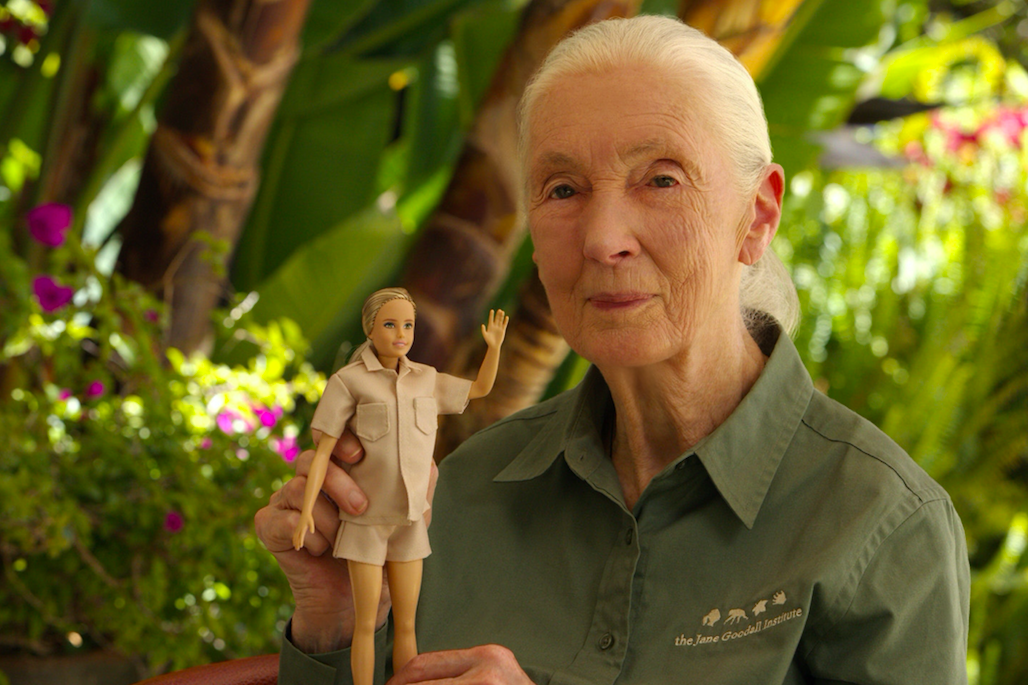
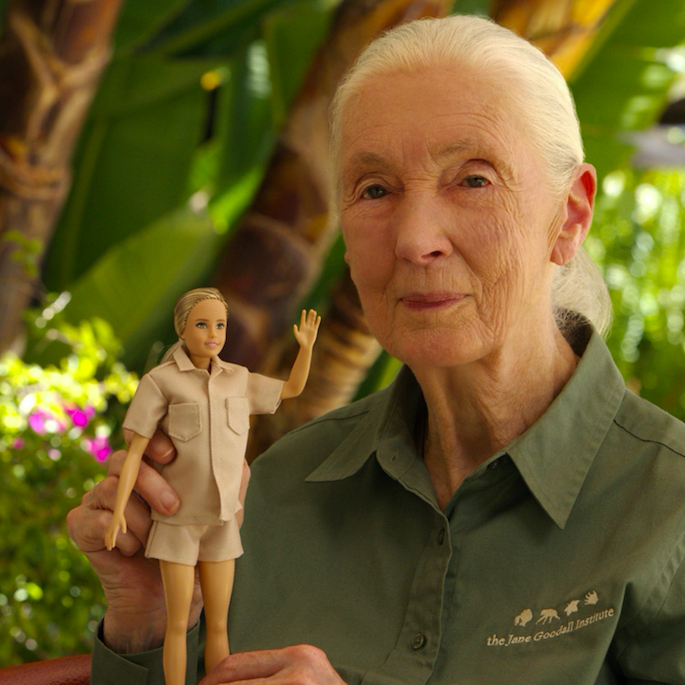
Encouraging children to learn more about renowned ethologist and environmental activist Dr. Jane Goodall is behind the latest Barbie doll rollout from Mattel. The toy manufacturer says it hopes the newly released doll, as well as others modeled after female leaders and risk takers, will help kids realize their own potential to change the world for the better.
The conservationist’s motivational story began when she was just 26 years old, when she left England to begin what would become seminal research into the nearly unknown world of wild chimpanzees, according to the Jane Goodall Institute.
“My entire career, I’ve wanted to help inspire kids to be curious and explore the world around them — just like I did when I first traveled to Tanzania 62 years ago,” Goodall said in a public statement. “I’m thrilled to partner with Barbie and encourage young children to learn from their environment and feel a sense that they can make a difference. Through this partnership, I hope to inspire the next generation of eco-leaders to join me in protecting our planet and remind them they can be anything, anywhere – on the field, in the lab and at the table.”
A role model for future scientists and environmentalists
Goodall’s life has had a significant impact on both primate research and the number of women choosing science as a career. “Over the years, her groundbreaking research at Gombe has attracted many women, who were nearly absent from the field of primatology when she began,” says the Goodall Institute. “Today, women lead the field of long-term primate behavioral studies around the world.”
The activist’s work continues to resonate with young people considering a science-related career, as well as anyone concerned about protecting wildlife throughout the world.
According to the Goodall Institute, there was very little known about chimpanzees and their genetic kinship to humans when she began her research in 1960.
“She took an unorthodox approach in her field research, immersing herself in their habitat and their lives to experience their complex society as a neighbor rather than a distant observer and coming to understand them not only as a species, but also as individuals with emotions and long-term bonds,” adds the institute. “Dr. Jane Goodall’s discovery in 1960 that chimpanzees make and use tools is considered one of the greatest achievements of 20th-century scholarship. Her field research at Gombe [National Park] transformed our understanding of chimpanzees and redefined the relationship between humans and animals in ways that continue to emanate around the world.”
A means to promote environmental awareness
Mattel released the Jane Goodall doll to coincide with the July 14th World Chimpanzee Day to further acknowledge her important research as well as her efforts as a humanitarian, scientist and activist. The launch also marks the 62nd anniversary of Goodall’s first trip to the Gombe forest in Tanzania.
“Kids need more role models like Dr. Jane Goodall, because imagining they can be anything is just the beginning – seeing it makes all the difference,” said Lisa McKnight, executive vice president and global head of Barbie and Dolls at Mattel. “We hope that this collection and homage to a groundbreaking pioneer for women in science and conservation inspires kids to learn more about green careers, how they can protect the planet and act out sustainable stories through doll play.”
The Jane Goodall doll, which sells for approximately $35, features a younger version of the 88-year-old scientist wearing an outdoor khaki shirt and shorts along with binoculars. The doll is accompanied by Goodall’s most well-known research subject — David Graybeard, the chimpanzee who first accepted the environmentalist soon after her arrival in Tanzania. That bond allowed her to closely observe the primate’s community and the chimps’ behaviors.
Barbie fans are apparently bonding with Goodall’s story — as of press time the doll is sold out.
This Barbie doll is the first among Mattel's “Inspiring Women Series” to be made from recycled ocean-bound plastic and be certified carbon neutral. This doll joins others in the series modeled after inspirational icons such as Dr. Maya Angelou, Billie Jean King, Ida B. Wells, Rosa Parks and Eleanor Roosevelt.
‘Career of the Year’ Barbie doll series focuses on eco-leadership
The Barbie brand is partnering with the Jane Goodall Institute to introduce a four-doll set featuring career women working to protect our planet and advocate for sustainability. “This set is designed to encourage kids to play out their own sustainability stories and learn more about careers they may not be familiar with, including a chief sustainability officer, conservation scientist, renewable energy engineer and environmental advocate,” says Mattel.
To further recognize Goodall’s lifetime accomplishments, Barbie launched a partnership to promote the Goodall Institute’s Roots & Shoots program, created to encourage children to be curious and learn more about how they can influence society and their environment.
A step forward for sustainable toys
The Jane Goodall Barbie doll is certified as carbon-neutral by Climate Action Partners; in addition to performing a third-party lifecycle assessment of the doll, Mattel also bought carbon offsets from environmental projects in Australia, Ghana and the U.S. Other Barbie dolls include parts made from plastic waste sourced within 30 miles (50 km) of waterways.
Mattel is among several toy manufacturers incorporating recycling into their business models. Parents can send their children’s used toys — with the exception of any that are electronic — back to the company with the items recycled into new toys, down-cycled or converted into energy. In addition to Barbie, other Mattel brands participating in the company’s program include Fisher-Price, Mega and Matchbox.
Image credit: The Jane Goodall Institute by Jane Goodall Productions
The SDGs Are in Danger — And So Are We


Cascading and interlinked crises are putting the 2030 Agenda for Sustainable Development in grave danger, “along with humanity’s very own survival,” according to the United Nations’ latest report on the state of the Sustainable Development Goals, or SDGs.
In 2015, U.N. member nations adopted the SDGs, 17 interrelated goals all necessary to achieve peace and prosperity around the world by 2030. The Sustainable Development Goals Report 2022 outlines the ways in which the COVID-19 pandemic, climate change, and a sharp increase in armed conflicts have derailed years of progress toward the goals and endangering humanity’s survival. In short, the world is moving in the wrong direction, as hunger is increasing, natural resources are degrading, and armed conflict is on an alarming rise.
What went wrong?
Global crises do not happen in a vacuum, and unfortunately catastrophes often give rise to additional, interrelated problems. For example, while the COVID-19 pandemic has taken the lives of millions and left millions more with long-term health implications, the crisis also destroyed years of progress in poverty alleviation and caused the first rise in income inequality between countries in an entire generation.
COVID-19 is not the only crisis that has created spin-off disasters. The war in Ukraine has spelled tragedy for Ukrainians and has also created more hardship globally, as prices of food, fuel and fertilizers have increased radically. The crisis has further disrupted supply chains and is pushing more of the world into hunger.
Finally, humanity has not made the changes necessary to avoid the worst impacts of climate change, and the window to avoid catastrophe is closing. To ensure humanity’s survival, carbon emissions must peak before 2025, decline by 43 percent by 2030, and then fall to net-zero by 2050. Instead, carbon emissions rose 6 percent last year. Voluntary carbon commitments are not adequate, as the world is on track to see a 14 percent increase in carbon emissions over the next decade. Current national pledges are not enough to avoid disastrous climate consequences.
Where do we go from here?
While the latest SDGs report seems dire, it also spells out what is needed to pull the world back from the brink. The biggest emergencies facing Earth are complex, interlinked and cascading systems of problems. Solutions must therefore be as comprehensive as the crises.
In the report, Liu Zhenmin, U.N. under-secretary-general for economic and social affairs, lays out a three-part plan of action necessary to save the 2030 Agenda and achieve peace, prosperity and planetary health.
First, end armed conflicts. Ending war is a prerequisite for sustainable development. The tragic loss of lives and resources to conflict is unacceptable, and diplomacy is the only way to achieve peace and long-term planetary viability.
Next, humanity must preserve natural resources, reduce carbon emissions, overhaul global food systems and create jobs that support the sustainable economy. Because solutions are just as interlinked as problems, adopting practices like investing in clean energy and public services can address multiple emergencies at once.
Finally, the world must adopt a sweeping overhaul of the international financial and debt systems so that a “two-track recovery” is avoided and developing countries are not excluded from sustainable solutions. Peace and prosperity are only achieved when they are achieved for all.
The report also called for governments to urgently prioritize funding for data infrastructure to better implement solutions now and anticipate future needs and crises.
With eight years to go, the SDGs are facing a huge risk
The SDGs are on life support, and the world needs to take urgent action to save them. Progress has been reversed on all 17 goals, and nothing but sweeping, institutional change and multi-stakeholder partnerships will deliver the advancement needed to achieve peace and prosperity. To keep the goals of 2030 alive and avoid the most catastrophic consequences of climate change, the international community must cooperate to take immediate, multilateral action.
Image credit: Prado via Unsplash
Air Travel Is Trapped in Its Own American Horror Story, But the Industry’s Wounds Are Self-Inflicted


In case you missed it, air travel this summer has been far more than a hot mess — summed up by the headlines about one airline sending a flight from London’s Heathrow to Detroit with around 1,000 lost bags and no passengers. Flights have too often become purgatory for many travelers, as well as airline employees, leading to one insufferable, long and hot summer.
We’ve heard a bevy of reasons, including a surge in demand from travelers after they spent two years sheltering in place, as well as sickouts and technical meltdowns.
But according to the business and government watchdog Accountable.US, the commercial aviation industry has merely reaped what it has sown over recent years. The group’s research concludes that management at the largest U.S. air carriers must shoulder much of the blame for this chaos. The group links the airline sector's ongoing labor shortages to a legacy of treating its workforce poorly with low wages, long hours and minimal benefits.
This cluster in the U.S. airline industry has festered two years after the federal government doled out around $54 billion to keep companies in the sector afloat during the worst of the COVID-19 pandemic. Part of the deal the feds made with airlines was that employees would not be fired or furloughed through the fall of 2021.
Then tens of thousands of airline employees were laid off immediately after the terms of the bailout expired, and the rest is history. Airlines started reporting growing quarterly profits during 2021 and forecast more growth going into 2022. They expected a robust air travel season in 2022. But now, the airlines don’t have the employees required to handle the massive nationwide cabin fever breaking out over the past several months, so they've started to cancel flights. The resulting stories, of course, will live forever on TikTok and Instagram.
Some airlines counter that they didn’t lay off employees, but rather doled out “voluntary separations” and “early retirement packages” to workers they couldn’t afford to keep on their payrolls — the day after the bailout agreement ended.
As the travel news grew worse during 2022, airlines blamed flight cancellations and delays on bad weather and issues with air traffic control systems. The problem with that argument, however, is that the data suggests 40 percent of all air travel delays from January to April 2022 were due to circumstances under the airlines' control, Sens. Edward Markey and Richard Blumenthal, members of the Commerce, Science and Transportation Committee, wrote in a series of open letters to top U.S. airlines last month.
“If an airline cancels a flight for any reason, the airline must promptly provide passengers refunds, as required by the law,” the senators wrote. “As the July 4th holiday approaches, the reliability of the air travel system should not be up in the air.”
We know what happened since, as close to 29 percent of U.S. domestic and international flights were either delayed or canceled over the July 4 weekend.
Long before the air travel industry found itself in the midst of this summer’s turmoil, doubts had been raised about the effectiveness of the federal government’s multibillion-dollar lifeline. By September 2021, the Washington Post and other media outlets reported that U.S. airlines had shed approximately 56,000 workers, despite their pledge not to lay off employees.
“I think it’s right for taxpayers and Congress to ask, ‘What did you do with this money?’” John Breyault, vice president for public policy, telecommunications and fraud at the National Consumers League, told the Post’s Michael Laris and Lori Aratani in December. “The bailout money was specifically designed so that airlines would not have work shortages. While they didn’t lay off people, they did furlough many employees. There were many early-retirement packages. And now we’re seeing the results of that.”
Image credit: Clay Banks via Unsplash
NESsT: Connecting Refugees With Sustainable Employment
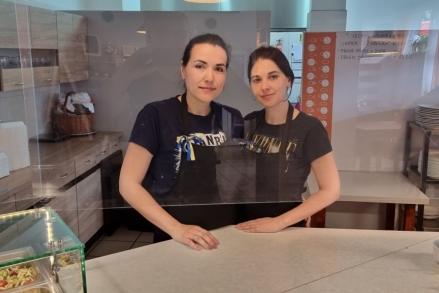

The Transformational Tech series highlights Cisco’s nonprofit grant recipients that use technology to help transform the lives of individuals and communities. NESsT has worked for decades to support social enterprises with grant funding, training, mentorship, and other resources that help to create quality jobs for underserved communities.
NESsT supports social enterprises that provide employment and career development opportunities for underserved communities—a vital, often missing component to humanitarian aid work. NESsT uses an engaged approach, providing tailored financing, a variety of tech-enabled assessment tools and action plans across all stages of development, one-on-one advisory services, and networking support to social entrepreneurs in emerging markets.
NESsT has benefited from Cisco’s funding support for multiple initiatives, and now Cisco will provide seed funding for NESsT to establish a NESsT Refugee Employment Initiative, so they can better support and strengthen local social enterprises that create dignified jobs and wraparound services for Ukrainian refugees.
In 25 years, NESsT has built a strong foundation of supporting social entrepreneurs in emerging markets, especially in Central and Eastern Europe and Latin America. When the conflict in Ukraine began, NESsT was already in position to help the more than 4.9 million refugees that have left Ukraine. Many have sought refuge in Poland and Romania, and all of them will need displacement support. Both temporary and permanent employment will help them regain a sense of security.
Growing from seed (funding)
Back in 1997, Nicole Etchart started NESsT out of a need to help nonprofit organizations work in more sustainable ways. The founders felt that traditional companies alone couldn’t create enough job opportunities to lift people out of poverty. They also knew that nonprofits were too dependent on short-term grant funding preventing them from achieving long-term impact. So they created NESsT to provide social enterprises, whether for-profit on not-for-profit, with the tools and capital needed to launch financially sustainable businesses while addressing poverty and exclusion.
Nicole shared, “Although we have gone through several iterations, NESsT has always been committed to supporting social entrepreneurs to launch and grow companies committed to social impact.”
NESsT’s incubation program offers customized support and flexible financing for social enterprises. But that’s not all. NESsT also provides supporting resources for these entrepreneurs, like trainings and mentorship, so they can help as many people gain secure and dignified employment as possible.
NESsT Refugee Employment Initiative
For decades, NESsT has operated in the Central European region (including Hungary, Poland, and Romania). So when the current conflict in Ukraine began, NESsT responded by establishing the NESsT Refugee Employment Initiative to expand opportunities for dignified employment and income generation opportunities for Ukrainians displaced from their homes.
Nicole stated, “It became very evident that we had an important role to play, because although the immediate needs were humanitarian–to help refugees access shelter and food—every refugee will also need access to a job, and that’s what NESsT does. Companies in the NESsT portfolio in Poland and Romania have begun to react and expand their networks so that they could begin working with refugees.”
Through the Ukrainian Refugee Fund, NESsT has initially committed to donating €3million through 15 investments. They estimate that their support will help in the creation of 2,000 jobs for refugees, impacting as many as 5,000 people.
In the months since, NESsT has been hard at work, selecting and investing in local social enterprises and cooperatives that are committed to integrating refugees into jobs and/or workforce training. NESsT’s portfolio businesses have committed to helping Ukrainian refugees gain their livelihoods back—one example is Future Collars.
Future Collars teaches IT skills to at-risk and low-income women. When the Ukrainian conflict began, Future Collars organized and launched a “Welcome Home” campaign, including outreach, to provide refugee women with job training and placement to fill skills gaps in Poland. The enterprise also plans to set up a scholarship fund to help refugees from Ukraine access career training.
Providing a foundation for long term recovery
Beyond providing food, shelter, and other basic needs to displaced people, the need to help them build the skills and resiliency they will need for long term recovery is often overlooked.
NESsT’s work is a testament to the importance of empowering people with the skills to help rebuild their communities. In 25 years, NESsT has invested in over 223 companies. They have helped to create close to 77,000 quality jobs, impacting close to a million people. In their most recent employment survey, they found that 85 percent of people polled feel stable and secure in their jobs. And the income of those impacted by their portfolio was, on average, 144 percent over minimum wage.
To date, NESsT has assessed 489 social enterprises in Romania, and granted funds and business training to a selection of them. In return, these 26 businesses have influenced over 2,600 at-risk individuals through new economic opportunities.
View original content here and on 3BL Media.
Image credit via Cisco and NESsT
Essential Workers Across the Globe Keep Leaving Their Jobs
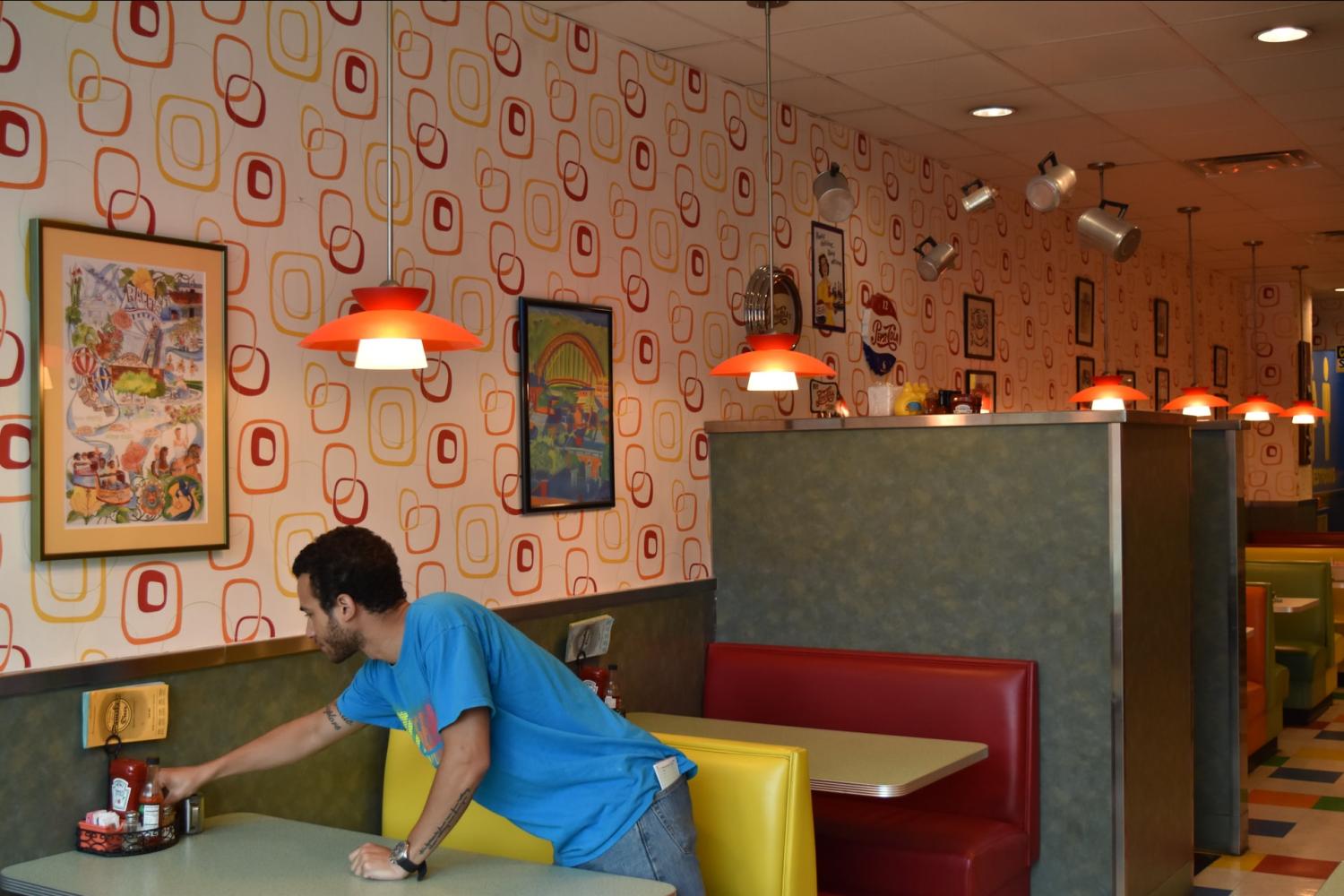
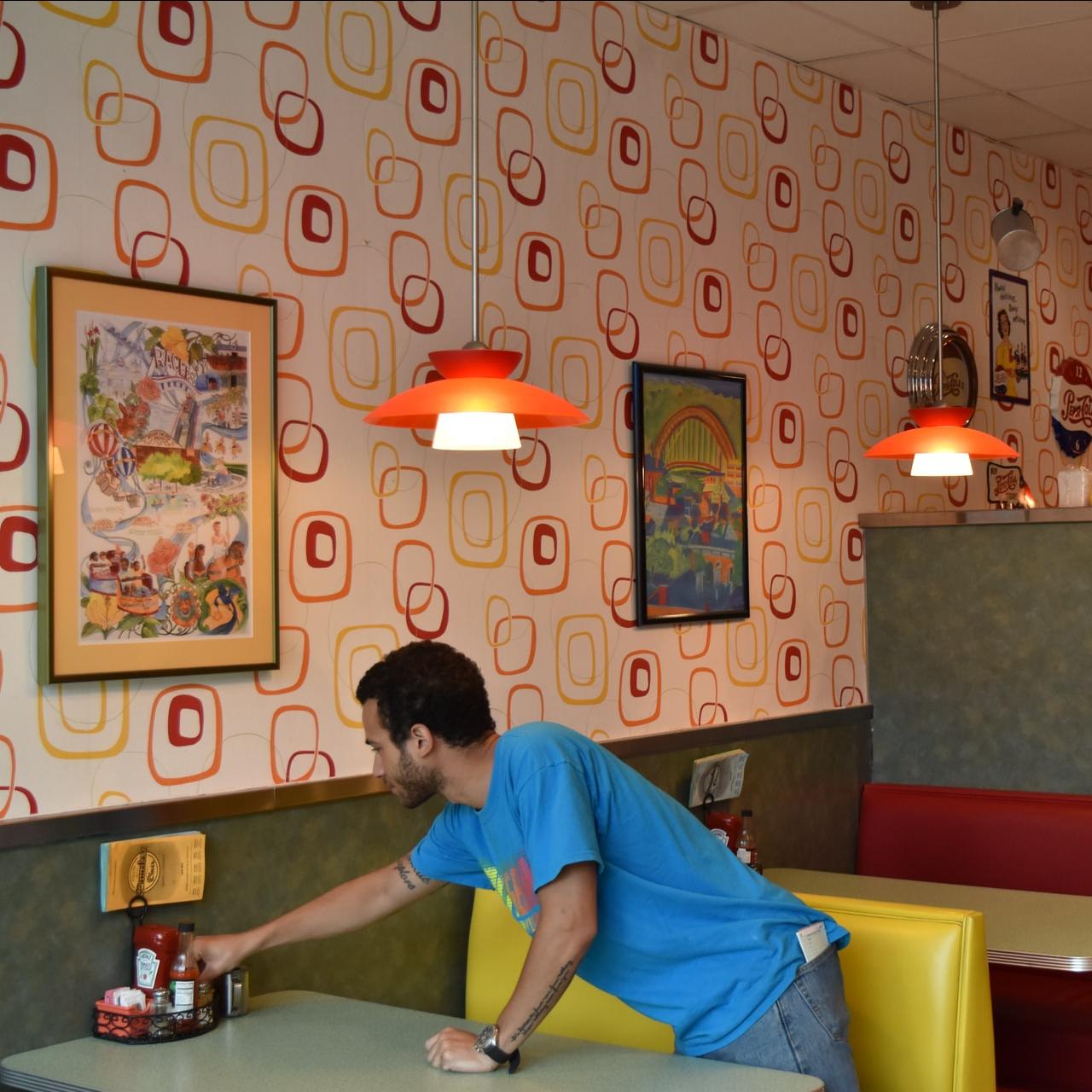
Droves of “deskless workers” — i.e., essential workers who are unable to perform their jobs remotely or within a hybrid environment — may still be leaving their jobs by the start of the new year. A recent survey from Boston Consulting Group (BCG) uncovered why they are on this tack, providing business leaders with the necessary intelligence to respond accordingly and stave off a potential labor crisis.
BCG had surveyed more than 7,000 essential workers, generally employees who operate in non-office settings, across industries in Australia, France, Germany, India, Japan, the U.K. and the U.S. The survey revealed that more than one-third of these employees are considering quitting their jobs in the next six months.
Essential workers make up more than three-quarters of the global workforce. The work they perform is vital, as evidenced during the peak of the pandemic when many businesses shut down and these employees remained on the front lines, enabling the global economy to plug along.
Of the seven nations surveyed, Japan is the most at risk of losing essential workers as they were found to have the least attachment to their jobs. And while the U.S. is one of the surveyed countries with a lower share of essential workers at risk of leaving, in May there were over 11 million job openings in the U.S.; another 4.3 million Americans quit their jobs during that month alone.
As a result, businesses across all sectors around the globe are struggling to find workers. These widespread labor shortages make a company’s employee retention rate more important than ever, as higher turnover leads to higher training costs.
There has been much speculation about the causes of the “Great Resignation,” particularly as it appears to be a counterintuitive trend in view of soaring inflation, rising interest rates and the looming threat of another recession. Some companies in sectors such as retail have made efforts to encourage their employees to stay: They increased wages and added incentives in an attempt to attract and retain employees. But such attempts have not always been successful, as many essential workers have reported that they left jobs due to what they felt was a toxic workplace culture.
BCG’s report provides insight into what is motivating so many employees to leave their jobs during what is a challenging time. The primary factors identified were the lack of opportunity for career advancement (41 percent), pay (30 percent), and lack of flexibility in terms of when and where they work, as well as work-life balance (28 percent).
At the same time, the reasons workers gave for wanting to remain in their current roles included pay satisfaction (48 per cent), job security (30 per cent), career advancement opportunity (23 percent), in addition to having an easy commute (23 percent).
Having aggregated all the data, BCG suggests next steps that can help address the factors contributing to this ongoing mass exodus. For example, companies are encouraged to factor in workers’ needs when scheduling shifts. Establishing pathways for employees’ career advancement can also help with retention. Creating a “frontline first” culture by listening to workers and responding by making appropriate changes, adjustments and improvements to human policies and practices can also encourage workers to stay.
“Deskless” workers are essential workers. They are as integral to our day-to-day lives as they are to our global markets and supply chains. And yet, they are often treated as if they don’t matter, or even worse.
BCG’s report functions as a collective voice for essential workers and gives them a direct line to the C-suite. Business leaders need to listen to their employees, and then equally important, they need to act. Let’s hope for everyone’s sake this is the whistle blow at the end of a shift for business-as-usual.
Image credit: Karen Woolstrum via Unsplash
Biodiversity Loss Must Stop to Protect the One in Five People Dependent on Wild Species


A new report out from the Intergovernmental Science-Policy Platform on Biodiversity and Ecosystem Services (IPBES) lays out important policy considerations necessary to address hastening biodiversity loss and its repercussions for the one in five people whose sustenance and income are directly linked to roughly 50,000 wild species. With species loss occurring at breakneck speeds, the Sustainable Use Assessment establishes the importance of taking immediate action to preserve threatened species and maintain the livelihoods and wellbeing of billions of people. However, a shift in societal values, along with strategic financing, will be necessary in order to implement the bulk of IPBES’ suggestions.
People living in poverty stand to suffer the most from biodiversity loss. Around 70 percent of them rely on wild species and the businesses that are dependent on them, including those linked to subsistence farming, wood fuel, tourism and more. Humans harvest 10,000 wild species for food alone and yet failure to protect those species has resulted in population declines, including a 68 percent decrease in wild animals during a four and a half decades-long period beginning in 1970. Among the causes listed in the IPBES report, unsustainable hunting accounts for 1,341 mammalian species that are currently at risk. Additionally, overfishing affects 34 percent of the oceans’ wild stocks.
Clearly, a crisis is brewing, but animals are only part of the looming disaster. One in three people depend on timber for cooking fuel, 1.1 billion of which do not have any access to electricity or other sources of energy for food preparation. Yet, unsustainable logging has put 12 percent of wild tree species in danger, along with a lot of humanity’s ability to cook. Much of this is due to unauthorized trade. An estimated $69 to $200 billion is generated each year through illegally traded wild species, with wood and fish being the most heavily exploited.
Protected wild areas alone generate $600 billion per year from 8 billion visitors. Many local accommodations and restaurants as well as individual guides and artisans depend on the tourist industry to stay in business, meaning species loss directly threatens their livelihoods.
“Without wild species, our whole planet unravels. Billions of people rely on wild species for food, medicine, energy and clean water. They are especially critical for the livelihoods of vulnerable people in rural areas, who depend on them for subsistence, income and cultural needs. Our modern global economy increases the threats to biodiversity due to pressures from local demand and global trade,” IPBES Lead Author and the World Wildlife Fund’s Global Forest Lead Scientist, Pablo Pacheco, explained in his response to the report’s release.
In order to stop wild species loss and protect the people who rely on those species for survival, IPBES recommends enacting systems and policies with certain essential facets, such as encouraging active participation by those affected; utilizing information from a variety of sources (including indigenous knowledge); making sure that costs and benefits are felt fairly; ensuring that policies are a good fit for local circumstances; keeping track of wild species and how practices are affecting them; cohesion between policy at international, regional and local levels while maintaining local customs; and, of course, powerful, dynamic institutions.
IPBES also recognizes societal change as imperative to stopping biodiversity loss and suggests that values and goals can be influenced to promote justice and sustainability among the broader population. In the press release for another report, the IPBES concluded, “The way nature is valued in political and economic decisions is both a key driver of the global biodiversity crisis and a vital opportunity to address it.”
Study co-chair Dr. Brigitte Baptiste explained, “Recognizing and respecting the worldviews, values and traditional knowledge of indigenous peoples and local communities allows policies to be more inclusive, which also translates into better outcomes for people and nature. Also, recognizing the role of women in the stewardship of nature and overcoming power asymmetries frequently related to gender status, can advance the inclusion of the diversity of values in decisions about nature.”
Unfortunately, putting these transformative changes in place won’t be easy. In a world that is consistently sold to the highest bidder, how will those with increasingly more power and money be convinced to care about the well-being of those with increasingly less? It’s not an easy question to answer, but one that must be committed to for the sake of the planet’s wild species and the people that rely on them.
Image credit: Zinko Hein via Unsplash